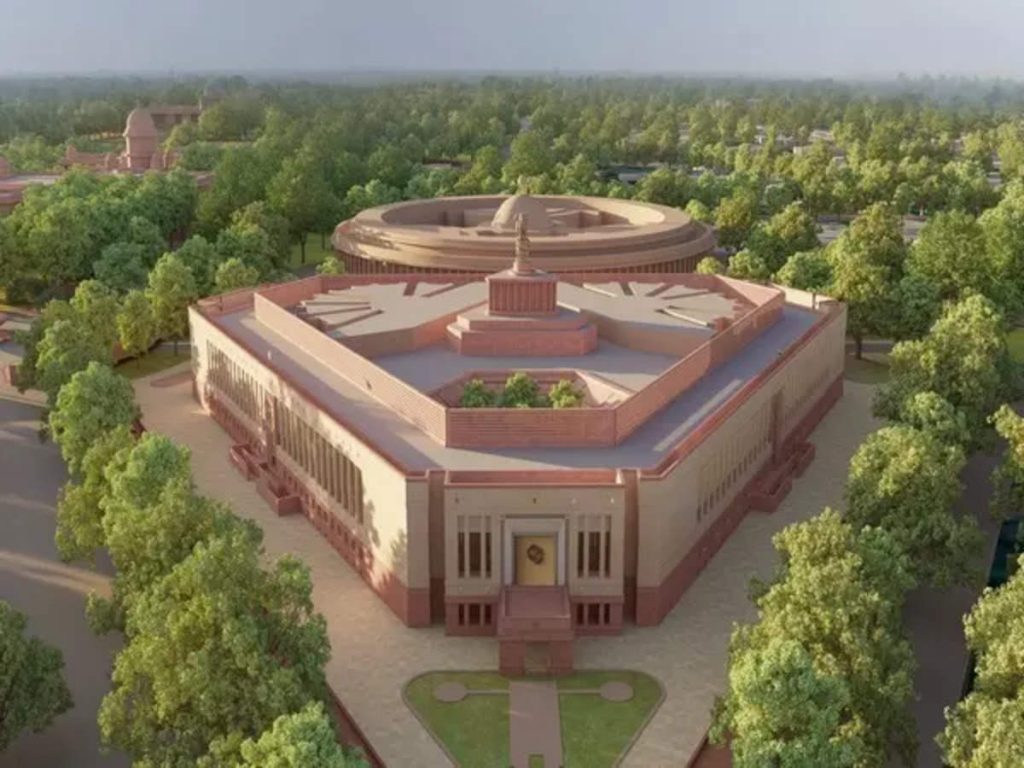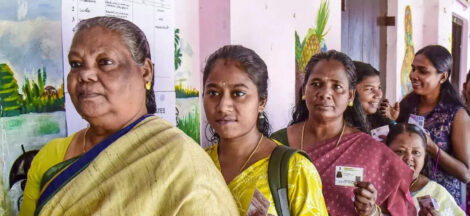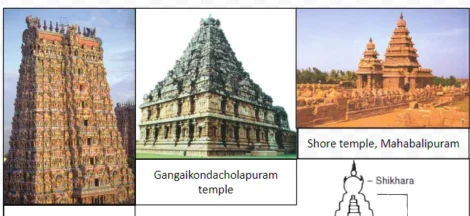By S.N. Sahu
Nineteen Opposition political parties – the Indian National Congress, the All India Trinamool Congress, the Dravida Munnetra Kazhagam, the Aam Aadmi Party, the Janata Dal (United), the Nationalist Congress Party, the Shiv Sena (Uddhav Balasaheb Thackeray), the Communist Party of India (Marxist), the Samajwadi Party, the Rashtriya Janata Dal, the Communist Party of India, the All India Muslim League, the Jharkhand Mukti Morcha, the Jammu & Kashmir National Conference, the Kerala Congress (M), the Revolutionary Socialist Party, the Marumalarchi Dravida Munnetra Kazhagam, the Viduthalai Chiruthaigal Katchi, and the Rashtriya Lok Dal – in a joint statement issued earlier today stated that they would boycott the inauguration of the new Parliament building by Prime Minister Narendra Modi on May 28.
Charging the Prime Minister of “hollow[ing] out the Parliament“, they stated, “Modi’s decision to inaugurate the new Parliament building by himself, completely sidelining President Murmu, is not only a grave insult but a direct assault on our democracy which demands a commensurate response.” “This undignified act”, they asserted, “insults the high office of the President and violates the letter and spirit of the Constitution. It undermines the spirit of inclusion which saw the nation celebrate its first woman Adivasi President.”
Modi is scheduled to inaugurate the new Parliament building on May 28, the date marking the birth anniversary of Hindu nationalist politician, activist and writer V.D. Savarkar. He had earlier laid its foundation stone on December 10, 2020 and performed the bhumipoojan ceremony.
At the time of the construction of the building, Modi inspected it and the news media covered it widely and prominently, with Modi surveying the yet to be completed halls and the structure.
It is understood that apart from the President of India, even former occupants of that highest office of our Republic, Pratibha Patil and Ramnath Kovind, have not been invited to the inaugural programme.
The leader of the opposition in Rajya Sabha and Indian National Congress President Mallikarjun Kharge, in a series of tweets, charged the Modi government with “repeatedly disrespecting propriety” by not inviting the President and former Presidents to the inauguration of the new Parliament building, and accused that the office of the President has been “reduced to tokenism under the Bharatiya Janata Party–Rashtriya Swayamsevak Sangh government“. He added that the government had “ensured election of the President of India from the Dalit and the tribal communities only for electoral reasons.”
That the date chosen for the inauguration is associated with Savarkar has not gone down well with the opposition leaders; many of whom had flagged the multiple mercy petitions Savarkar submitted to the British authorities for his release from the Cellular Jail in the Andamans, the fact that he stood by the British regime during the Quit India movement, and that he had proposed that Hindus and Muslims constituted two different nations even before the barrister, politician and founder of Pakistan, Mohammed Ali Jinnah adopted and promoted the two-nation theory.
The Congress has gone to the extent of asserting that by choosing the birth anniversary of Savarkar to inaugurate the Parliament building, the legacy of freedom fighters is being offended in a calculated manner.
The spectacle associated with Modi in the laying of the foundation, inspection, inauguration and dedication of any major project to the nation has become the defining feature of his tenure as Prime Minister since 2014.
Modi laying the foundation of the new Parliament building and inaugurating it on its completion gives an impression that he wants to be prominently visible in such programmes, and script a record for posterity that his name and persona remain associated with the construction of the new building for the apex legislature.
The President of India, along with the two Houses, Rajya Sabha and Lok Sabha, constitutes the Parliament as per Article 79 of the Constitution. In this sense, the President forms part of the apex legislature, which in the scheme of separation of powers, has a distinct place along with the executive and judiciary in the constitutional structure of governance.
Modi is a member of Lok Sabha and by virtue of being the Prime Minister, is the head of the executive. In employing the meaning and logic enshrined in Article 79 that the President of India along with Rajya Sabha and Lok Sabha constitute the Parliament, the President should have been deservedly invited to inaugurate the new Parliament building.
The President, apart from being constitutionally prescribed to constitute the Parliament, addresses, as mandated in Article 86 of the Constitution, both the Houses of the Parliament assembled together at the commencement of the first session of the Parliament after each general election to the House of the People and at the commencement of the first session of each year. Besides, no Bill passed by both Houses would become an Act of the Parliament without the President’s assent.
Such a deep and integral connection of the President with the Parliament is one of the defining features of the Constitution.
More than this, the President of India occupies the number one position in the warrant of precedence, and the Prime Minister is third, after the Vice President of India.
So how is it that the Prime Minister, who is at number three, is inaugurating the new Parliament building, and the President, being at number one, remains out of reckoning for this purpose and is not even invited to the programme?
But no one cares about constitutional niceties and protocol in the new India conjured up after 2014 and invoked to justify all actions of the Modi regime. After all, neither the constitutional imperative nor protocol was followed when on February 25, 2019, Prime Minister Modi inaugurated the National War Memorial and the then President of India Ramnath Kovind, the supreme commander of defence forces as per Article 53 of the Constitution, was completely excluded from that historic programme.
Many retired high ranking defence officers, some of whom are supporters of the Modi regime, had publicly expressed their dismay that the supreme commander of the defence forces was not present at an event wholly representing the glorious legacy of the defence forces, and their sacrifices and martyrdom for the cause of defending the unity and integrity of the nation, both during war and peace times.
So when the Modi regime did not make the President of India, as supreme commander, a part of a programme concerning the inauguration of the historic National War Memorial in 2019, why should we expect the President, who is part of the Parliament, to be there at the inauguration of the new Parliament building by the same Prime Minister later this month?
Even before the 19 opposition parties decided to boycott the inauguration ceremony, the leaders of some of those parties, such as Rahul Gandhi of the Congress, Prof. Manoj K. Jha of the Rashtriya Janata Dal, D. Raja of the Communist Party of India, and Asaduddin Owaisi of the All India Majlis-e-Ittehadul Muslimeen had pleaded that instead of Prime Minister Modi, the President of India Droupadi Murmu should inaugurate the new Parliament building.
Of all the statements made by these leaders, Raja’s are the most hard-hitting. In a tweet, he remarked, “Obsession with self-image and cameras trumps decency and norms when it comes to Modi Ji.” He also pointed out that the “Prime Minister leads the executive organ of the State and the Parliament is the legislative organ.”
The Lok Sabha Secretariat publication Parliament House Estate, published in 2019, informs us that the President of India V.V. Giri laid the foundation of the Parliament House annexe building on August 3, 1970. Five years later, on October 24, 1975, the then Prime Minister Indira Gandhi did the honour of inaugurating it.
This is a shining example from our history, clearly bringing out the broad outlook of leaders not to get themselves involved in both the functions, one concerning the laying of the foundation and the other of inauguration. Had Prime Minister Gandhi expressed her desire to lay the foundation of annexe building, possibly no one would have dared to come in her way to appropriate that opportunity to the exclusion of the President of India.
By following that precedent, Prime Minister Modi, who had the privilege of laying the foundation of the new Parliament building in 2020, should be gracious enough not to appropriate the programme being organised to inaugurate it. He should take the initiative of reaching out to President Murmu, through the speaker, Lok Sabha, to do the honour of inaugurating it. It requires a high benchmark of basic courtesy, maturity and statesmanship. Sadly, the way things are proceeding, these ideals are being trampled upon, ruthlessly.
Raja’s acerbic expression sums up the complete script, from Modi’s laying of the foundation of the new Parliament building to its inauguration. Truly, it trumps decency and norms. One may add that it also trumps past precedents which were completely disregarded while taking decisions on such matters.
In 2002, then President of India K.R. Narayanan was invited by then Lok Sabha Speaker Bala Yogi to inaugurate the newly constructed Parliament library building named Sansadiya Gyanpeeth. Due to pressing engagements, Narayanan could not indicate the date and time for inaugurating it. The Lok Sabha Secretariat preferred to wait for the convenience of the President.
Eventually, on May 7, 2002, President Narayanan inaugurated it, and I had the privilege of participating in it. That precedent set by the Lok Sabha Secretariat to invite the President of India to inaugurate the Sansadiya Gyanpeeth and even wait for his convenience to do so should guide the present speaker of Lok Sabha Om Birla to take decisions on matters involving the inauguration of the new Parliament building.
But alas! In the words of Raja, “obsession with self-image and cameras trumps decency and norms when it comes to Modi Ji.”
The best course would have been for the speaker of Lok Sabha to consult leaders of both the opposition and the ruling party, unanimously choose a date to organise the inauguration function, and invite dignitaries such as the President of India, the Vice President of India, who is also the ex-officio Chairman of the Rajya Sabha, the Prime Minister, and former Presidents. At that function, the President should have been requested to inaugurate the new Parliament building and the Vice President, Prime Minister and Lok Sabha speaker should have been invited to speak.
Such an approach to inaugurate the new building of the apex legislature would celebrate our inclusive ideals and set a shining example for posterity, in tune with important programmes organised in the past in the Central Hall of Parliament with the participation of the President, Vice President, Prime Minister and Lok Sabha speaker. (IPA Service)
Courtesy: The Leaflet




 Cape Cobra Under Pilot’s Seat Is Not Uncommon
Cape Cobra Under Pilot’s Seat Is Not Uncommon 